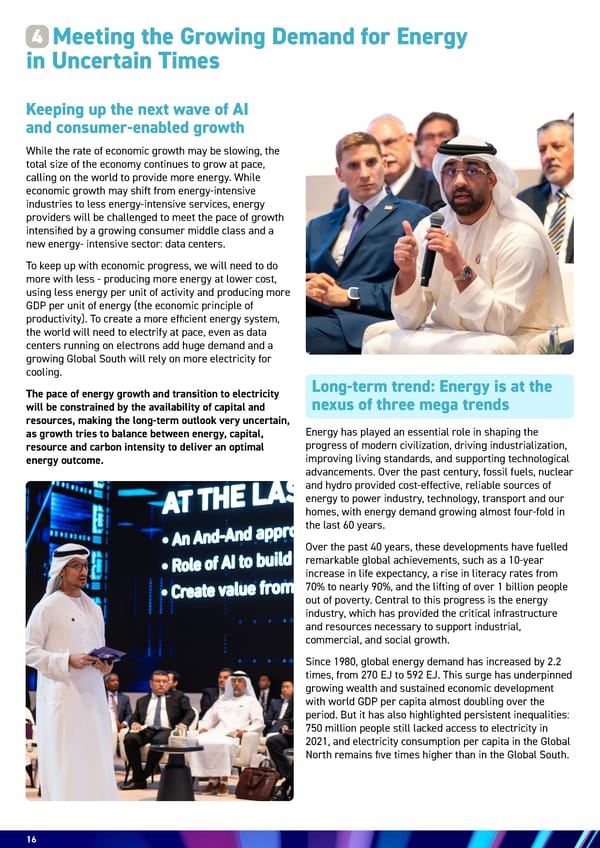16 While the rate of economic growth may be slowing, the total size of the economy continues to grow at pace, calling on the world to provide more energy. While economic growth may shift from energy-intensive industries to less energy-intensive services, energy providers will be challenged to meet the pace of growth intensified by a growing consumer middle class and a new energy- intensive sector: data centers. To keep up with economic progress, we will need to do more with less - producing more energy at lower cost, using less energy per unit of activity and producing more GDP per unit of energy (the economic principle of productivity). To create a more efficient energy system, the world will need to electrify at pace, even as data centers running on electrons add huge demand and a growing Global South will rely on more electricity for cooling. The pace of energy growth and transition to electricity will be constrained by the availability of capital and resources, making the long-term outlook very uncertain, as growth tries to balance between energy, capital, resource and carbon intensity to deliver an optimal energy outcome. Energy has played an essential role in shaping the progress of modern civilization, driving industrialization, improving living standards, and supporting technological advancements. Over the past century, fossil fuels, nuclear and hydro provided cost-effective, reliable sources of energy to power industry, technology, transport and our homes, with energy demand growing almost four-fold in the last 60 years. Over the past 40 years, these developments have fuelled remarkable global achievements, such as a 10-year increase in life expectancy, a rise in literacy rates from 70% to nearly 90%, and the lifting of over 1 billion people out of poverty. Central to this progress is the energy industry, which has provided the critical infrastructure and resources necessary to support industrial, commercial, and social growth. Since 1980, global energy demand has increased by 2.2 times, from 270 EJ to 592 EJ. This surge has underpinned growing wealth and sustained economic development with world GDP per capita almost doubling over the period. But it has also highlighted persistent inequalities: 750 million people still lacked access to electricity in 2021, and electricity consumption per capita in the Global North remains five times higher than in the Global South. Meeting the Growing Demand for Energy in Uncertain Times 4 Keeping up the next wave of AI and consumer-enabled growth Long-term trend: Energy is at the nexus of three mega trends
 Energy & AI: Twin Engines Turbo-Charging Economic Growth Page 15 Page 17
Energy & AI: Twin Engines Turbo-Charging Economic Growth Page 15 Page 17